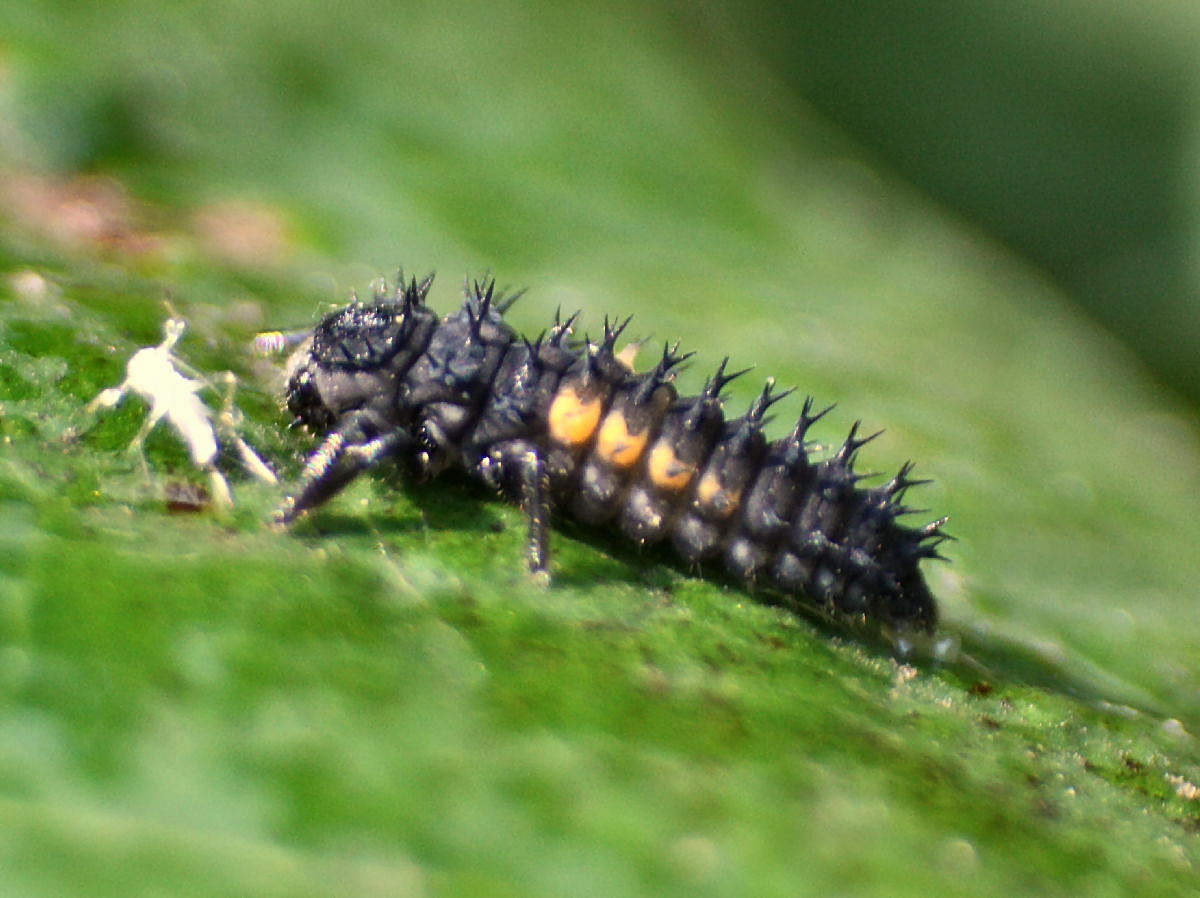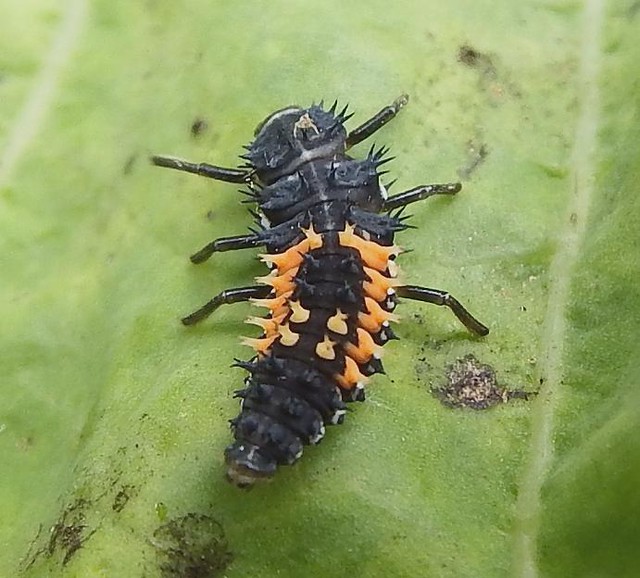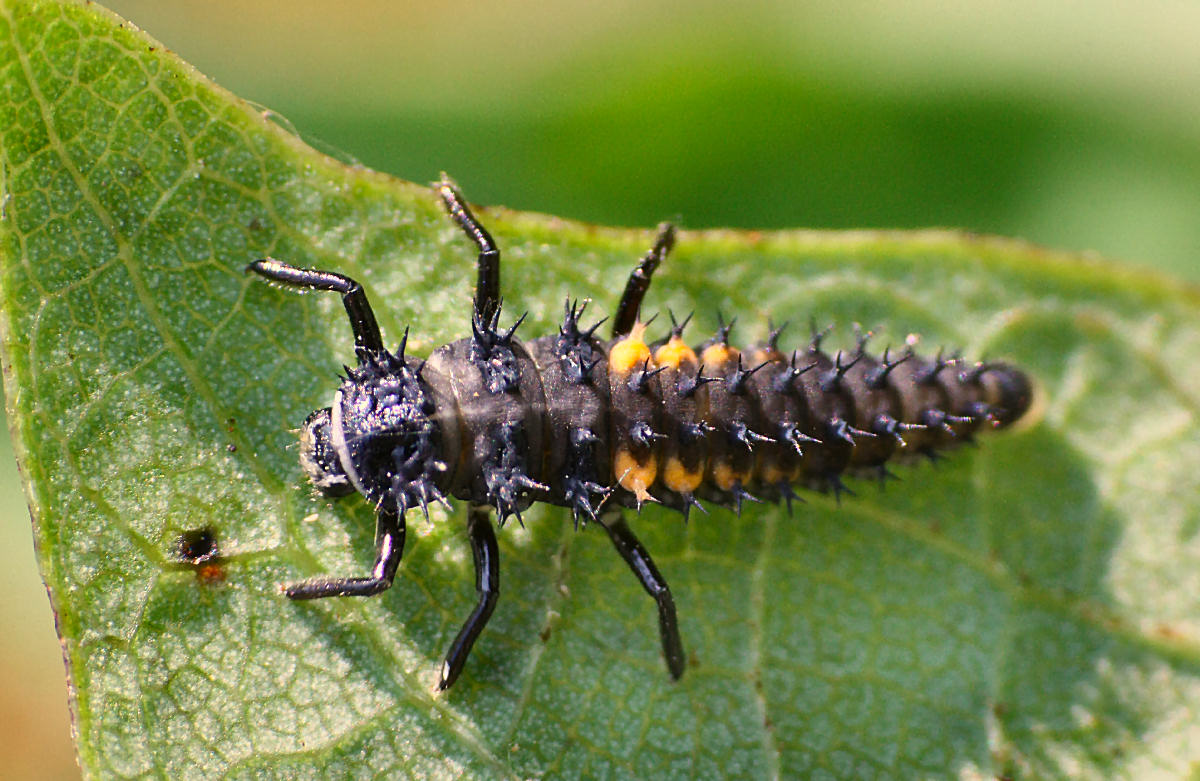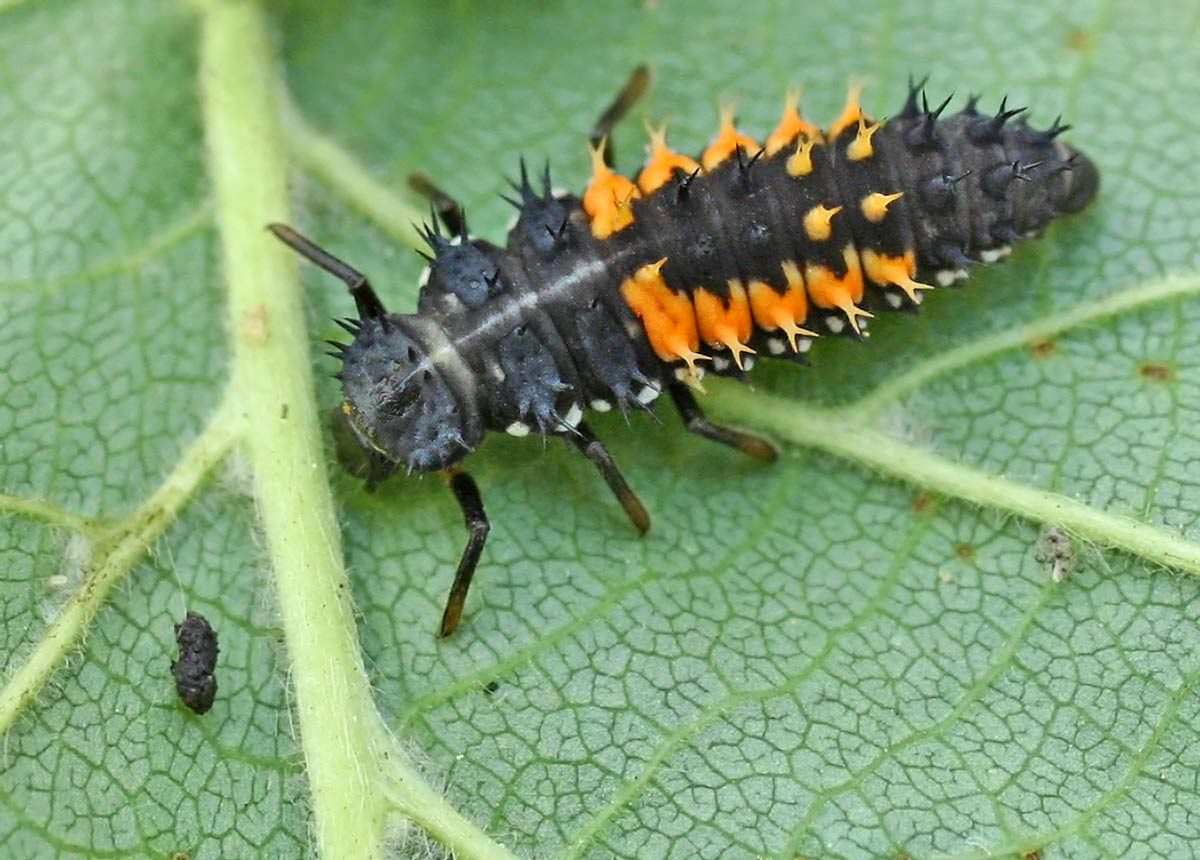
larva da identificare Harmonia axyridis , Natura Mediterraneo Forum
We attempt to determine the effect of the dietary switch from a native to non-native prey on the gut microbiota in the predaceous ladybird Harmonia axyridis larvae and adults and examine how the dietary effect may vary across generations. We fed H. axyridis with different diets, native aphid Megoura japonica (Matsumura) versus non-native mealybug Phenacoccus solenopsis (Tinsley), for 5.

harmonia axyridis larva Monica Iachelini Flickr
A) The cumulative intake (bivariate means ± SE) of protein and carbohydrate by the 4th-instar larvae of Harmonia axyridis over days 1-2 (filled symbols) and the entire stadium (open symbols).

Flickriver
The multicolored Asian lady beetle Harmonia axyridis Pallas was introduced from Asia both purposefully for classical biological control of arthropod pests and accidently into the United States many times during the twentieth century.

larva da identificare Harmonia axyridis , Forum Natura Mediterraneo
The Asian Lady Beetle, Harmonia axyridis. Larvae complete their development on plants where their primary food (aphids) is abundant. The non-mobile cocoon (pupal) stage remains attached to vegetation by its molted skin, but occasionally may be found clinging to exterior walls of buildings. The average time from egg to adult is about one.

Larvae of Harmonia axyridis on thistle, July 2008 (Photo T. Steenberg
H. axyridis is a promising biological control agent of several insect pests on a wide variety of ornamnental and agricultural crops.

Lady Beetle larva Harmonia axyridis
RNA was extracted from whole bodies of both the adult and the larva stage of a single Harmonia axyridis. The quality was verified using a Tapestation 2200 (all RIN scores >8) as well as a Qubit. The initial concentration for the larva sample was 83.2 ng*µL −1, while the initial concentration for the adult sample was 74.7 ng*µL −1.

multicoloured Asian beetle (Harmonia axyridis), larva and pupas on a
Here, a series of feeding experiments examined changes in the gut microbial community of larvae of the predatory lady beetle Harmonia axyridis H. axyridis Coccinella septempunctata eggs plus aphids over all larval stages decreased gut microbial abundance, whereas neonate consumption of the same had no such effect.

Harmonia axyridis Harlequin Ladybird larva c.5mm. Raiding … Flickr
Harmonia axyridis, the Asian lady beetle, is native to the Oriental region, found in China, ranging to the far south (Yunnan and Guangxi Provinces), Japan, Korea, Mongolia, and parts of the Palearctic region, from northern Kazakhstan, and eastern Russia west to the Altai Mountains and north to Siberia.
photo4u.it il forum italiano della fotografia Larva di Harmonia
Harmonia axyridis is a typical coccinellid beetle in shape and structure, being domed and having a "smooth" transition between its elytra (wing coverings), pronotum, and head. It ranges from 5.5-8.5mm in size. The common color form, f. "succinea", is orange or red in colouration with 0-22 black spots of variable size.

Harmonia axyridis larva dinner Harmonia axyridis or Asian … Flickr
Here we assessed functional responses of larvae and adult Harmonia axyridis on the 1st, 2nd and 3rd instar of the prey Spodoptera litura across a range of temperatures (i.e., 15, 20, 25, 30 and 35°C). The type and parameters of the functional responses were determined using logistic regression and fitted to the Rogers random predator equation.

Harmonia axyridis larva kenjonbro Flickr
However, most studies on nutrition regulation of carnivores mainly focus on protein and lipid, two major macronutrients in preys. In this study, nutrition regulation of protein and carbohydrate has been investigated in the 4th instar larvae of H. axyridis using Geometric Framework. We provided the insects two pairs of foods, one a protein.

Harmonia axyridis larva about to pupate epitree Flickr
The Asia lady beetle alternately called the harlequin multicolored Asian beetle is a member of the family of ladybugs. It is easily recognizable from its red elytra and black spots, though the number of spots and exact coloration varies in each specimen. Most have 19 spots, a few lesser or even more than that, while some may have no spots at all.

Harmonia axyridis larva Harmonia axyridis
The Asian lady beetle, or Harmonia axyridis, is a common ladybug that has been widely used in the U.S. to control the population and spread of other insects and plant pests, such as scale.

Springfield Plateau Asian Lady Beetle Larvae
Harmonia axyridis Hosts or Prey Adelgids, psyllids, scales, and especially aphids Identification Adult multicolored Asian lady beetles (also called ladybugs or ladybird beetles) are dome shaped (convex) on top, flat on the bottom, and rounded when viewed from above. The body is about 1/4 inch (6 mm) long and 1/5 inch (5 mm) wide.

Harmonia axyridis larva kenjonbro Flickr
Abstract The multicolored Asian lady beetle, Harmonia axyridis (Pallas) (Coleoptera: Coccinellidae), is an important natural enemy in agricultural ecosystems. In spite of being a carnivore consuming protein-rich preys, the lady beetles often consume carbohydrate-rich food like nectar or honeydew.

Harmonia axyridis Larve de coccinelle Ladybird larva Flickr
Introduction. The multicolored Asian lady beetle, Harmonia axyridis (Pallas), is a well-known aphid predator in its native Asian range (e.g., Hukusima and Kamei, 1970, Hukusima and Ohwaki, 1972, Yasumatsu and Watanabe, 1964).The presumed native distribution of H. axyridis extends from the Altai Mountains in the west to the Pacific Coast in the east, and from southern Siberia in the north to.